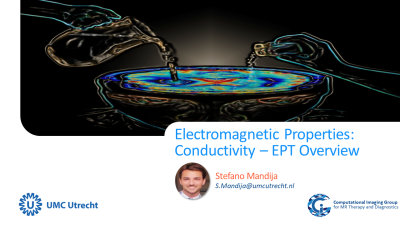Sunrise Course
Non-Standard MR Contrast Mechanisms: From Properties to Function II: Electromagnetic Properties
ISMRM & ISMRT Annual Meeting & Exhibition • 03-08 June 2023 • Toronto, ON, Canada

| 07:00 |
Electromagnetic Properties: Susceptibility: QSM vs. SWI Pros &
Cons
Xu Li
Keywords: Contrast mechanisms: Electromagnetic tissue properties, Contrast mechanisms: Susceptibility Tissue magnetic susceptibility is an important source of imaging contrast used in susceptibility-weighted imaging (SWI) and quantitative susceptibility mapping (QSM). In this presentation, I will explain and compare the basic technical aspects of SWI and QSM. While SWI focuses on enhancing contrast related to tissue magnetic susceptibility, QSM aims at quantifying the magnetic susceptibility distribution. QSM overcomes blooming artifacts in SWI and improves differentiation between paramagnetic and diamagnetic materials, such as iron and myelin. However, QSM requires a more complicated reconstruction pipeline. |
|
| 07:30 |
 |
Electromagnetic Properties: Conductivity - EPT Overview
Stefano Mandija
Keywords: Contrast mechanisms: Electromagnetic tissue properties Tissue electrical conductivity represents an emerging quantitative MRI contrast. While tissue conductivity is frequency dependent, this talk will mostly focus on high frequency tissue conductivity (hundred(s) MHz). In particular, we will see how to measure and reconstruct high frequency tissue conductivity from MRI data. We will also review its applications in MRI diagnostic and therapy, with particular attention to cancer. We will then look at current and future activities devoted to the standardization of conductivity imaging and its reconstruction processes. Finally, we will conclude with a short overview of tools and data available to everyone. |
The International Society for Magnetic Resonance in Medicine is accredited by the Accreditation Council for Continuing Medical Education to provide continuing medical education for physicians.